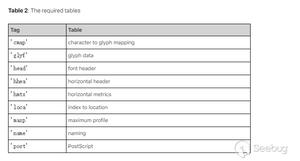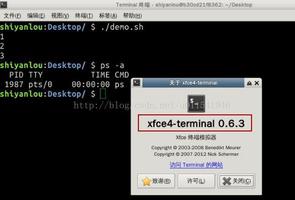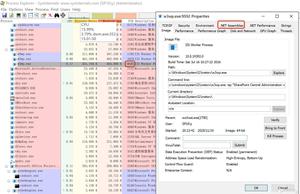java io系列23之 BufferedReader(字符缓冲输入流)

转载请注明出处:http://www.cnblogs.com/skywang12345/p/io_23.html
更多内容请参考:java io系列01之 "目录"
BufferedReader 介绍
BufferedReader 是缓冲字符输入流。它继承于Reader。
BufferedReader 的作用是为其他字符输入流添加一些缓冲功能。
BufferedReader 函数列表
BufferedReader(Reader in)BufferedReader(Reader in, int size)
void close()
void mark(int markLimit)
boolean markSupported()
int read()
int read(char[] buffer, int offset, int length)
String readLine()
boolean ready()
void reset()
long skip(long charCount)
BufferedReader 源码分析(基于jdk1.7.40)
package java.io;public class BufferedReader extends Reader {
private Reader in;
// 字符缓冲区
private char cb[];
// nChars 是cb缓冲区中字符的总的个数
// nextChar 是下一个要读取的字符在cb缓冲区中的位置
private int nChars, nextChar;
// 表示“标记无效”。它与UNMARKED的区别是:
// (01) UNMARKED 是压根就没有设置过标记。
// (02) 而INVALIDATED是设置了标记,但是被标记位置太长,导致标记无效!
private static final int INVALIDATED = -2;
// 表示没有设置“标记”
private static final int UNMARKED = -1;
// “标记”
private int markedChar = UNMARKED;
// “标记”能标记位置的最大长度
private int readAheadLimit = 0; /* Valid only when markedChar > 0 */
// skipLF(即skip Line Feed)是“是否忽略换行符”标记
private boolean skipLF = false;
// 设置“标记”时,保存的skipLF的值
private boolean markedSkipLF = false;
// 默认字符缓冲区大小
private static int defaultCharBufferSize = 8192;
// 默认每一行的字符个数
private static int defaultExpectedLineLength = 80;
// 创建“Reader”对应的BufferedReader对象,sz是BufferedReader的缓冲区大小
public BufferedReader(Reader in, int sz) {
super(in);
if (sz <= 0)
throw new IllegalArgumentException("Buffer size <= 0");
this.in = in;
cb = new char[sz];
nextChar = nChars = 0;
}
// 创建“Reader”对应的BufferedReader对象,默认的BufferedReader缓冲区大小是8k
public BufferedReader(Reader in) {
this(in, defaultCharBufferSize);
}
// 确保“BufferedReader”是打开状态
private void ensureOpen() throws IOException {
if (in == null)
throw new IOException("Stream closed");
}
// 填充缓冲区函数。有以下两种情况被调用:
// (01) 缓冲区没有数据时,通过fill()可以向缓冲区填充数据。
// (02) 缓冲区数据被读完,需更新时,通过fill()可以更新缓冲区的数据。
private void fill() throws IOException {
// dst表示“cb中填充数据的起始位置”。
int dst;
if (markedChar <= UNMARKED) {
// 没有标记的情况,则设dst=0。
dst = 0;
} else {
// delta表示“当前标记的长度”,它等于“下一个被读取字符的位置”减去“标记的位置”的差值;
int delta = nextChar - markedChar;
if (delta >= readAheadLimit) {
// 若“当前标记的长度”超过了“标记上限(readAheadLimit)”,
// 则丢弃标记!
markedChar = INVALIDATED;
readAheadLimit = 0;
dst = 0;
} else {
if (readAheadLimit <= cb.length) {
// 若“当前标记的长度”没有超过了“标记上限(readAheadLimit)”,
// 并且“标记上限(readAheadLimit)”小于/等于“缓冲的长度”;
// 则先将“下一个要被读取的位置,距离我们标记的置符的距离”间的字符保存到cb中。
System.arraycopy(cb, markedChar, cb, 0, delta);
markedChar = 0;
dst = delta;
} else {
// 若“当前标记的长度”没有超过了“标记上限(readAheadLimit)”,
// 并且“标记上限(readAheadLimit)”大于“缓冲的长度”;
// 则重新设置缓冲区大小,并将“下一个要被读取的位置,距离我们标记的置符的距离”间的字符保存到cb中。
char ncb[] = new char[readAheadLimit];
System.arraycopy(cb, markedChar, ncb, 0, delta);
cb = ncb;
markedChar = 0;
dst = delta;
}
// 更新nextChar和nChars
nextChar = nChars = delta;
}
}
int n;
do {
// 从“in”中读取数据,并存储到字符数组cb中;
// 从cb的dst位置开始存储,读取的字符个数是cb.length - dst
// n是实际读取的字符个数;若n==0(即一个也没读到),则继续读取!
n = in.read(cb, dst, cb.length - dst);
} while (n == 0);
// 如果从“in”中读到了数据,则设置nChars(cb中字符的数目)=dst+n,
// 并且nextChar(下一个被读取的字符的位置)=dst。
if (n > 0) {
nChars = dst + n;
nextChar = dst;
}
}
// 从BufferedReader中读取一个字符,该字符以int的方式返回
public int read() throws IOException {
synchronized (lock) {
ensureOpen();
for (;;) {
// 若“缓冲区的数据已经被读完”,
// 则先通过fill()更新缓冲区数据
if (nextChar >= nChars) {
fill();
if (nextChar >= nChars)
return -1;
}
// 若要“忽略换行符”,
// 则对下一个字符是否是换行符进行处理。
if (skipLF) {
skipLF = false;
if (cb[nextChar] == '\n') {
nextChar++;
continue;
}
}
// 返回下一个字符
return cb[nextChar++];
}
}
}
// 将缓冲区中的数据写入到数组cbuf中。off是数组cbuf中的写入起始位置,len是写入长度
private int read1(char[] cbuf, int off, int len) throws IOException {
// 若“缓冲区的数据已经被读完”,则更新缓冲区数据。
if (nextChar >= nChars) {
if (len >= cb.length && markedChar <= UNMARKED && !skipLF) {
return in.read(cbuf, off, len);
}
fill();
}
// 若更新数据之后,没有任何变化;则退出。
if (nextChar >= nChars) return -1;
// 若要“忽略换行符”,则进行相应处理
if (skipLF) {
skipLF = false;
if (cb[nextChar] == '\n') {
nextChar++;
if (nextChar >= nChars)
fill();
if (nextChar >= nChars)
return -1;
}
}
// 拷贝字符操作
int n = Math.min(len, nChars - nextChar);
System.arraycopy(cb, nextChar, cbuf, off, n);
nextChar += n;
return n;
}
// 对read1()的封装,添加了“同步处理”和“阻塞式读取”等功能
public int read(char cbuf[], int off, int len) throws IOException {
synchronized (lock) {
ensureOpen();
if ((off < 0) || (off > cbuf.length) || (len < 0) ||
((off + len) > cbuf.length) || ((off + len) < 0)) {
throw new IndexOutOfBoundsException();
} else if (len == 0) {
return 0;
}
int n = read1(cbuf, off, len);
if (n <= 0) return n;
while ((n < len) && in.ready()) {
int n1 = read1(cbuf, off + n, len - n);
if (n1 <= 0) break;
n += n1;
}
return n;
}
}
// 读取一行数据。ignoreLF是“是否忽略换行符”
String readLine(boolean ignoreLF) throws IOException {
StringBuffer s = null;
int startChar;
synchronized (lock) {
ensureOpen();
boolean omitLF = ignoreLF || skipLF;
bufferLoop:
for (;;) {
if (nextChar >= nChars)
fill();
if (nextChar >= nChars) { /* EOF */
if (s != null && s.length() > 0)
return s.toString();
else
return null;
}
boolean eol = false;
char c = 0;
int i;
/* Skip a leftover '\n', if necessary */
if (omitLF && (cb[nextChar] == '\n'))
nextChar++;
skipLF = false;
omitLF = false;
charLoop:
for (i = nextChar; i < nChars; i++) {
c = cb[i];
if ((c == '\n') || (c == '\r')) {
eol = true;
break charLoop;
}
}
startChar = nextChar;
nextChar = i;
if (eol) {
String str;
if (s == null) {
str = new String(cb, startChar, i - startChar);
} else {
s.append(cb, startChar, i - startChar);
str = s.toString();
}
nextChar++;
if (c == '\r') {
skipLF = true;
}
return str;
}
if (s == null)
s = new StringBuffer(defaultExpectedLineLength);
s.append(cb, startChar, i - startChar);
}
}
}
// 读取一行数据。不忽略换行符
public String readLine() throws IOException {
return readLine(false);
}
// 跳过n个字符
public long skip(long n) throws IOException {
if (n < 0L) {
throw new IllegalArgumentException("skip value is negative");
}
synchronized (lock) {
ensureOpen();
long r = n;
while (r > 0) {
if (nextChar >= nChars)
fill();
if (nextChar >= nChars) /* EOF */
break;
if (skipLF) {
skipLF = false;
if (cb[nextChar] == '\n') {
nextChar++;
}
}
long d = nChars - nextChar;
if (r <= d) {
nextChar += r;
r = 0;
break;
}
else {
r -= d;
nextChar = nChars;
}
}
return n - r;
}
}
// “下一个字符”是否可读
public boolean ready() throws IOException {
synchronized (lock) {
ensureOpen();
// 若忽略换行符为true;
// 则判断下一个符号是否是换行符,若是的话,则忽略
if (skipLF) {
if (nextChar >= nChars && in.ready()) {
fill();
}
if (nextChar < nChars) {
if (cb[nextChar] == '\n')
nextChar++;
skipLF = false;
}
}
return (nextChar < nChars) || in.ready();
}
}
// 始终返回true。因为BufferedReader支持mark(), reset()
public boolean markSupported() {
return true;
}
// 标记当前BufferedReader的下一个要读取位置。关于readAheadLimit的作用,参考后面的说明。
public void mark(int readAheadLimit) throws IOException {
if (readAheadLimit < 0) {
throw new IllegalArgumentException("Read-ahead limit < 0");
}
synchronized (lock) {
ensureOpen();
// 设置readAheadLimit
this.readAheadLimit = readAheadLimit;
// 保存下一个要读取的位置
markedChar = nextChar;
// 保存“是否忽略换行符”标记
markedSkipLF = skipLF;
}
}
// 重置BufferedReader的下一个要读取位置,
// 将其还原到mark()中所保存的位置。
public void reset() throws IOException {
synchronized (lock) {
ensureOpen();
if (markedChar < 0)
throw new IOException((markedChar == INVALIDATED)
? "Mark invalid"
: "Stream not marked");
nextChar = markedChar;
skipLF = markedSkipLF;
}
}
public void close() throws IOException {
synchronized (lock) {
if (in == null)
return;
in.close();
in = null;
cb = null;
}
}
}
说明:
要想读懂BufferReader的源码,就要先理解它的思想。BufferReader的作用是为其它Reader提供缓冲功能。创建BufferReader时,我们会通过它的构造函数指定某个Reader为参数。BufferReader会将该Reader中的数据分批读取,每次读取一部分到缓冲中;操作完缓冲中的这部分数据之后,再从Reader中读取下一部分的数据。
为什么需要缓冲呢?原因很简单,效率问题!缓冲中的数据实际上是保存在内存中,而原始数据可能是保存在硬盘或NandFlash中;而我们知道,从内存中读取数据的速度比从硬盘读取数据的速度至少快10倍以上。
那干嘛不干脆一次性将全部数据都读取到缓冲中呢?第一,读取全部的数据所需要的时间可能会很长。第二,内存价格很贵,容量不想硬盘那么大。
下面,我就BufferReader中最重要的函数fill()进行说明。其它的函数很容易理解,我就不详细介绍了,大家可以参考源码中的注释进行理解。我们先看看fill()的源码:
private void fill() throws IOException { int dst;
if (markedChar <= UNMARKED) {
/* No mark */
dst = 0;
} else {
/* Marked */
int delta = nextChar - markedChar;
if (delta >= readAheadLimit) {
/* Gone past read-ahead limit: Invalidate mark */
markedChar = INVALIDATED;
readAheadLimit = 0;
dst = 0;
} else {
if (readAheadLimit <= cb.length) {
/* Shuffle in the current buffer */
System.arraycopy(cb, markedChar, cb, 0, delta);
markedChar = 0;
dst = delta;
} else {
/* Reallocate buffer to accommodate read-ahead limit */
char ncb[] = new char[readAheadLimit];
System.arraycopy(cb, markedChar, ncb, 0, delta);
cb = ncb;
markedChar = 0;
dst = delta;
}
nextChar = nChars = delta;
}
}
int n;
do {
n = in.read(cb, dst, cb.length - dst);
} while (n == 0);
if (n > 0) {
nChars = dst + n;
nextChar = dst;
}
}
根据fill()中的if...else...,我将fill()分为4种情况进行说明。
情况1:读取完缓冲区的数据,并且缓冲区没有被标记
执行流程如下,
(01) 其它函数调用 fill(),来更新缓冲区的数据
(02) fill() 执行代码 if (markedChar <= UNMARKED) { ... }
为了方便分析,我们将这种情况下fill()执行的操作等价于以下代码:
private void fill() throws IOException { int dst;
if (markedChar <= UNMARKED) {
/* No mark */
dst = 0;
}
int n;
do {
n = in.read(cb, dst, cb.length - dst);
} while (n == 0);
if (n > 0) {
nChars = dst + n;
nextChar = dst;
}
}
说明:
这种情况发生的情况是 — — Reader中有很长的数据,我们每次从中读取一部分数据到缓冲中进行操作。每次当我们读取完缓冲中的数据之后,并且此时BufferedReader没有被标记;那么,就接着从Reader(BufferReader提供缓冲功能的Reader)中读取下一部分的数据到缓冲中。
其中,判断是否读完缓冲区中的数据,是通过“比较nextChar和nChars之间大小”来判断的。其中,nChars 是缓冲区中字符的总的个数,而 nextChar 是缓冲区中下一个要读取的字符的位置。
判断BufferedReader有没有被标记,是通过“markedChar”来判断的。
理解这个思想之后,我们再对这种情况下的fill()的代码进行分析,就特别容易理解了。
(01) if (markedChar <= UNMARKED) 它的作用是判断“BufferedReader是否被标记”。若被标记,则dst=0。
(02) in.read(cb, dst, cb.length - dst) 等价于 in.read(cb, 0, cb.length),意思是从Reader对象in中读取cb.length个数据,并存储到缓冲区cb中,而且从缓冲区cb的位置0开始存储。该函数返回值等于n,也就是n表示实际读取的字符个数。若n=0(即没有读取到数据),则继续读取,直到读到数据为止。
(03) nChars=dst+n 等价于 nChars=n;意味着,更新缓冲区数据cb之后,设置nChars(缓冲区的数据个数)为n。
(04) nextChar=dst 等价于 nextChar=0;意味着,更新缓冲区数据cb之后,设置nextChar(缓冲区中下一个会被读取的字符的索引值)为0。
情况2:读取完缓冲区的数据,缓冲区的标记位置>0,并且“当前标记的长度”超过“标记上限(readAheadLimit)”
执行流程如下,
(01) 其它函数调用 fill(),来更新缓冲区的数据
(02) fill() 执行代码 if (delta >= readAheadLimit) { ... }
为了方便分析,我们将这种情况下fill()执行的操作等价于以下代码:
private void fill() throws IOException { int dst;
if (markedChar > UNMARKED) {
int delta = nextChar - markedChar;
if (delta >= readAheadLimit) {
markedChar = INVALIDATED;
readAheadLimit = 0;
dst = 0;
}
}
int n;
do {
n = in.read(cb, dst, cb.length - dst);
} while (n == 0);
if (n > 0) {
nChars = dst + n;
nextChar = dst;
}
}
说明:
这种情况发生的情况是 — — BufferedReader中有很长的数据,我们每次从中读取一部分数据到缓冲区中进行操作。当我们读取完缓冲区中的数据之后,并且此时,BufferedReader存在标记时,同时,“当前标记的长度”大于“标记上限”;那么,就发生情况2。此时,我们会丢弃“标记”并更新缓冲区。
(01) delta = nextChar - markedChar;其中,delta就是“当前标记的长度”,它是“下一个被读取字符的位置”减去“被标记的位置”的差值。
(02) if (delta >= readAheadLimit);其中,当delta >= readAheadLimit,就意味着,“当前标记的长度”>=“标记上限”。为什么要有标记上限,即readAheadLimit的值到底有何意义呢?
我们标记一个位置之后,更新缓冲区的时候,被标记的位置会被保存;当我们不停的更新缓冲区的时候,被标记的位置会被不停的放大。然后内存的容量是有效的,我们不可能不限制长度的存储标记。所以,需要readAheadLimit来限制标记长度!
(03) in.read(cb, dst, cb.length - dst) 等价于 in.read(cb, 0, cb.length),意思是从Reader对象in中读取cb.length个数据,并存储到缓冲区cb中,而且从缓冲区cb的位置0开始存储。该函数返回值等于n,也就是n表示实际读取的字符个数。若n=0(即没有读取到数据),则继续读取,直到读到数据为止。
(04) nChars=dst+n 等价于 nChars=n;意味着,更新缓冲区数据cb之后,设置nChars(缓冲区的数据个数)为n。
(05) nextChar=dst 等价于 nextChar=0;意味着,更新缓冲区数据cb之后,设置nextChar(缓冲区中下一个会被读取的字符的索引值)为0。
情况3:读取完缓冲区的数据,缓冲区的标记位置>0,“当前标记的长度”没超过“标记上限(readAheadLimit)”,并且“标记上限(readAheadLimit)”小于/等于“缓冲的长度”;
执行流程如下,
(01) 其它函数调用 fill(),来更新缓冲区的数据
(02) fill() 执行代码 if (readAheadLimit <= cb.length) { ... }
为了方便分析,我们将这种情况下fill()执行的操作等价于以下代码:
private void fill() throws IOException { int dst;
if (markedChar > UNMARKED) {
int delta = nextChar - markedChar;
if ((delta < readAheadLimit) && (readAheadLimit <= cb.length) ) {
System.arraycopy(cb, markedChar, cb, 0, delta);
markedChar = 0;
dst = delta;
nextChar = nChars = delta;
}
}
int n;
do {
n = in.read(cb, dst, cb.length - dst);
} while (n == 0);
if (n > 0) {
nChars = dst + n;
nextChar = dst;
}
}
说明:
这种情况发生的情况是 — — BufferedReader中有很长的数据,我们每次从中读取一部分数据到缓冲区中进行操作。当我们读取完缓冲区中的数据之后,并且此时,BufferedReader存在标记时,同时,“当前标记的长度”小于“标记上限”,并且“标记上限”小于/等于“缓冲区长度”;那么,就发生情况3。此时,我们保留“被标记的位置”(即,保留被标记位置开始的数据),并更新缓冲区(将新增的数据,追加到保留的数据之后)。
情况4:读取完缓冲区的数据,缓冲区的标记位置>0,“当前标记的长度”没超过“标记上限(readAheadLimit)”,并且“标记上限(readAheadLimit)”大于“缓冲的长度”;
执行流程如下,
(01) 其它函数调用 fill(),来更新缓冲区的数据
(02) fill() 执行代码 else { char ncb[] = new char[readAheadLimit]; ... }
为了方便分析,我们将这种情况下fill()执行的操作等价于以下代码:
private void fill() throws IOException { int dst;
if (markedChar > UNMARKED) {
int delta = nextChar - markedChar;
if ((delta < readAheadLimit) && (readAheadLimit > cb.length) ) {
char ncb[] = new char[readAheadLimit];
System.arraycopy(cb, markedChar, ncb, 0, delta);
cb = ncb;
markedChar = 0;
dst = delta;
nextChar = nChars = delta;
}
}
int n;
do {
n = in.read(cb, dst, cb.length - dst);
} while (n == 0);
if (n > 0) {
nChars = dst + n;
nextChar = dst;
}
}
说明:
这种情况发生的情况是 — — BufferedReader中有很长的数据,我们每次从中读取一部分数据到缓冲区中进行操作。当我们读取完缓冲区中的数据之后,并且此时,BufferedReader存在标记时,同时,“当前标记的长度”小于“标记上限”,并且“标记上限”大于“缓冲区长度”;那么,就发生情况4。此时,我们要先更新缓冲区的大小,然后再保留“被标记的位置”(即,保留被标记位置开始的数据),并更新缓冲区数据(将新增的数据,追加到保留的数据之后)。
示例代码
关于BufferedReader中API的详细用法,参考示例代码(BufferedReaderTest.java):
import java.io.BufferedReader;import java.io.ByteArrayInputStream;
import java.io.File;
import java.io.InputStream;
import java.io.FileReader;
import java.io.IOException;
import java.io.FileNotFoundException;
import java.lang.SecurityException;
/**
* BufferedReader 测试程序
*
* @author skywang
*/
public class BufferedReaderTest {
private static final int LEN = 5;
public static void main(String[] args) {
testBufferedReader() ;
}
/**
* BufferedReader的API测试函数
*/
private static void testBufferedReader() {
// 创建BufferedReader字符流,内容是ArrayLetters数组
try {
File file = new File("bufferedreader.txt");
BufferedReader in =
new BufferedReader(
new FileReader(file));
// 从字符流中读取5个字符。“abcde”
for (int i=0; i<LEN; i++) {
// 若能继续读取下一个字符,则读取下一个字符
if (in.ready()) {
// 读取“字符流的下一个字符”
int tmp = in.read();
System.out.printf("%d : %c\n", i, tmp);
}
}
// 若“该字符流”不支持标记功能,则直接退出
if (!in.markSupported()) {
System.out.println("make not supported!");
return ;
}
// 标记“当前索引位置”,即标记第6个位置的元素--“f”
// 1024对应marklimit
in.mark(1024);
// 跳过22个字符。
in.skip(22);
// 读取5个字符
char[] buf = new char[LEN];
in.read(buf, 0, LEN);
System.out.printf("buf=%s\n", String.valueOf(buf));
// 读取该行剩余的数据
System.out.printf("readLine=%s\n", in.readLine());
// 重置“输入流的索引”为mark()所标记的位置,即重置到“f”处。
in.reset();
// 从“重置后的字符流”中读取5个字符到buf中。即读取“fghij”
in.read(buf, 0, LEN);
System.out.printf("buf=%s\n", String.valueOf(buf));
in.close();
} catch (FileNotFoundException e) {
e.printStackTrace();
} catch (SecurityException e) {
e.printStackTrace();
} catch (IOException e) {
e.printStackTrace();
}
}
}
程序中读取的bufferedreader.txt的内容如下:
abcdefghijklmnopqrstuvwxyz0123456789
ABCDEFGHIJKLMNOPQRSTUVWXYZ
运行结果:
0 : a
1 : b
2 : c
3 : d
4 : e
buf=01234
readLine=56789
buf=fghij
以上是 java io系列23之 BufferedReader(字符缓冲输入流) 的全部内容, 来源链接: utcz.com/z/392609.html









